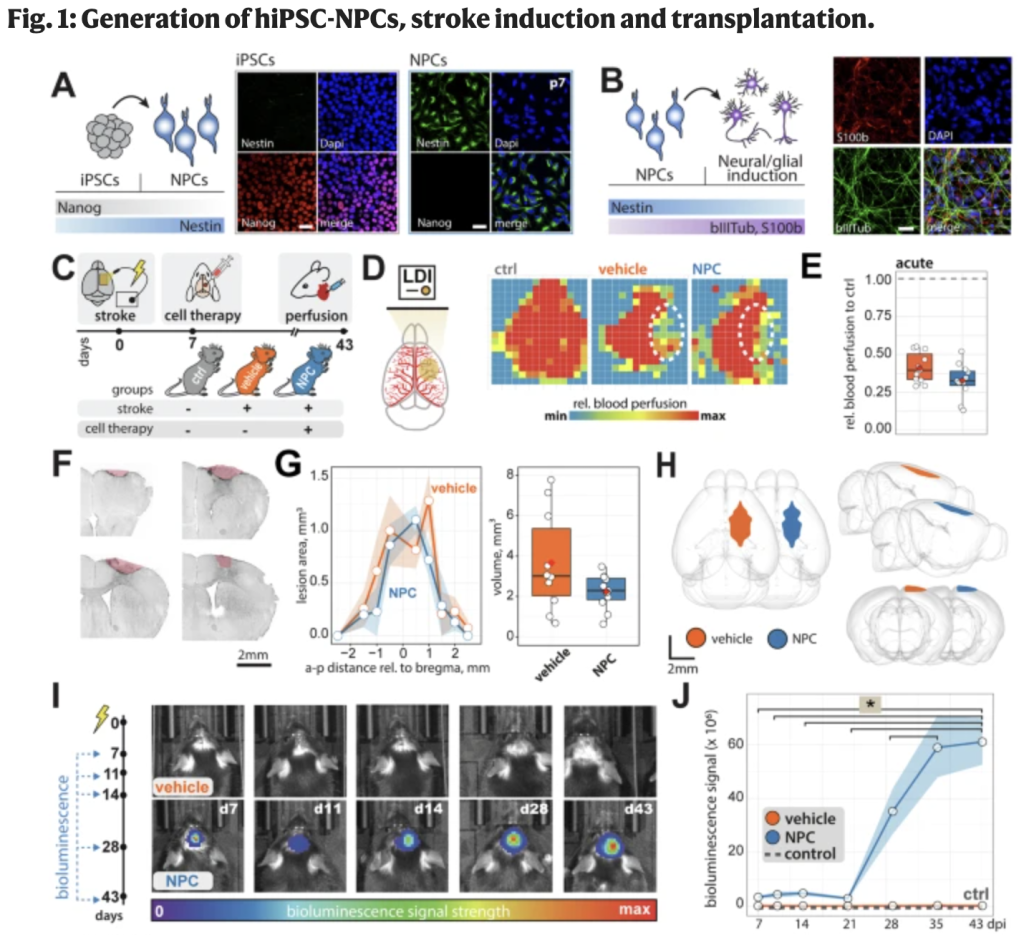Introduction
Stroke is a major cause of long-term disability, often leaving survivors with persistent motor and cognitive impairments due to irreversible damage to brain tissue. Traditional treatments focus on preventing further injury and managing symptoms, but they offer limited potential for restoring lost neural function. In recent years, stem cell therapy has emerged as a promising strategy to promote brain repair, by for example transplanting neural progenitor cells (NPCs) derived from human induced pluripotent stem cells (iPSCs). However, the mechanisms by which these grafts interact with host tissue remain poorly understood. To make an attempt to elucidate the mechanisms, Weber ae al. (2025) transplanted human iPSC-derived NPCs into the brain of mice following stroke, and focused on molecular crosstalk between host and graft tissue.
Findings
For this study, the performed transplantation 7 days after initiation of the stroke, as this is considered a critical plasticity window. The grafted cells survived for several weeks after and differentiated into mature neurons, primarily GABAergic and glutamatergic types. Mice receiving the transplants showed significant improvements in motor function, assessed using deep learning-based behavioural analysis. Grafted NPCs actively promoted tissue regeneration by enhancing angiogenesis, repaired the blood-brain barrier, reduced inflammation, and stimulated axonal growth. The authors also noted that the NPC might also help activate the brain’s own repair mechanisms. Using single-nucleus RNA sequencing, the authors uncovered a rich molecular crosstalk between graft and host cells. Like GABAergic neurons in the graft engaged in signalling via neurexin, neuregulin, NCAM, and SLIT pathways which are key regulators of neural connectivity and plasticity.
Impact
This study advances the field by demonstrating that stem cell-based therapies for stroke do more than replace lost neurons, they orchestrate a complex regenerative response through molecular interactions with host tissue. This research offers hope that future stroke treatments may harness biologically active grafts to guide and amplify the brain’s own healing processes.

Continue your reading here:
Weber RZ, Achón Buil B, Rentsch NH, Perron P, Halliday S, Bosworth A, Zhang M, Kisler K, Bodenmann C, Zürcher KJ, Uhr D, Meier D, Peter SL, Generali M, Lin S, Rüegg MA, Nitsch RM, Tackenberg C, Rust R. (2025). Neural xenografts contribute to long-term recovery in stroke via molecular graft-host crosstalk.
Nature Communications 2025 Sep 16;16(1):8224. doi: 10.1038/s41467-025-63725-3.
